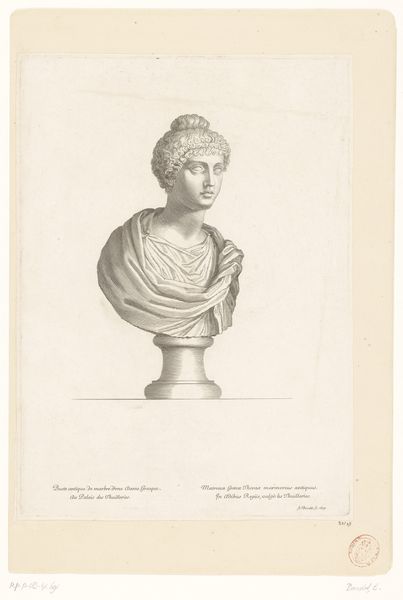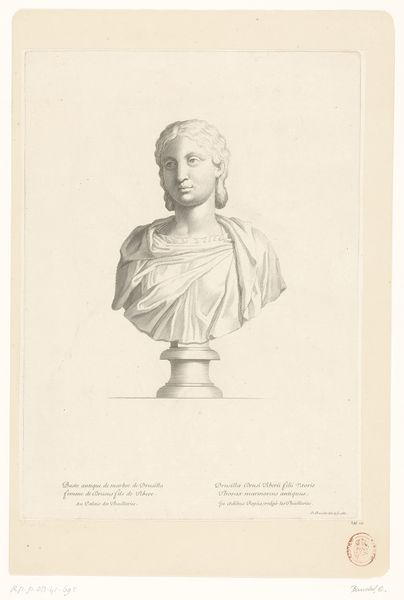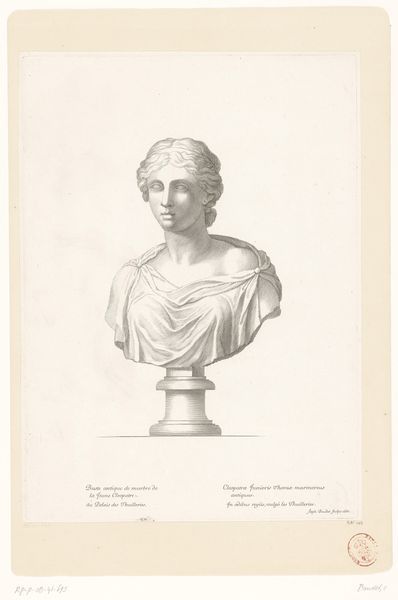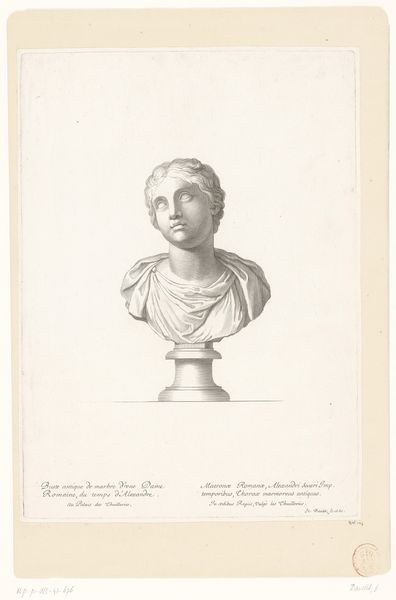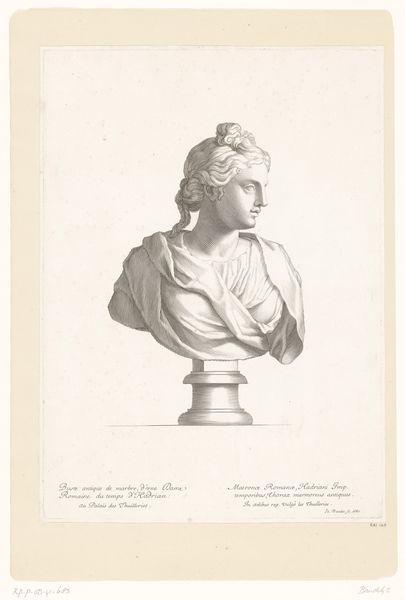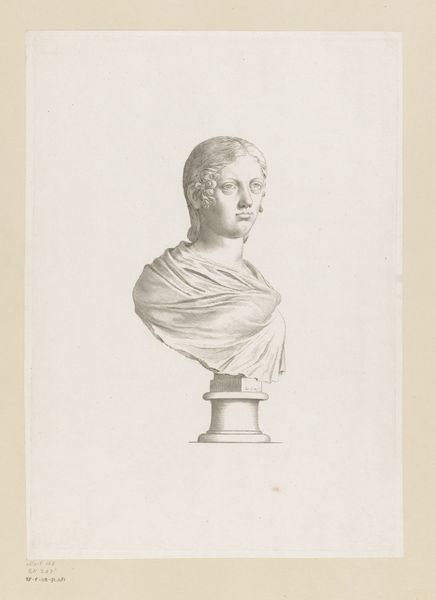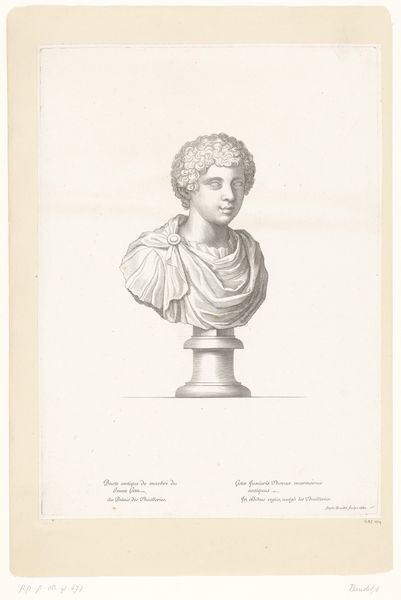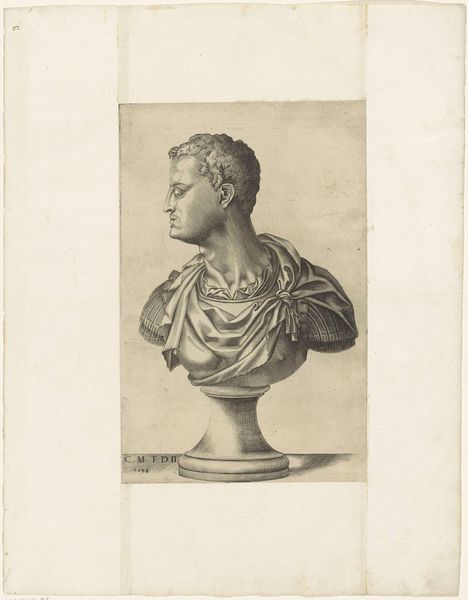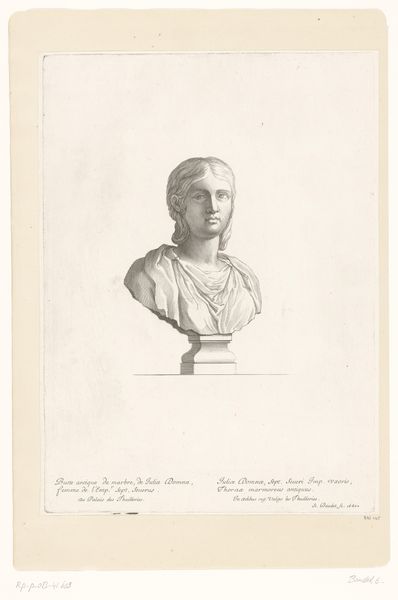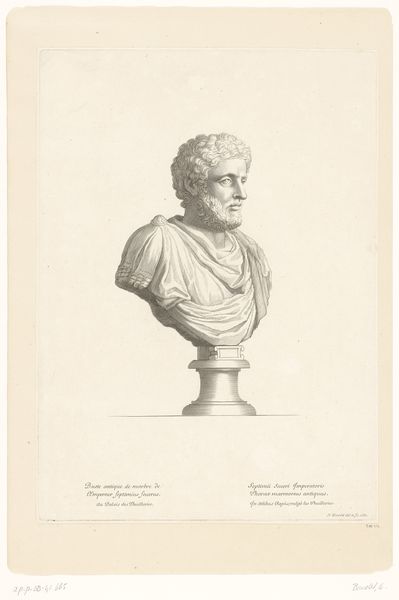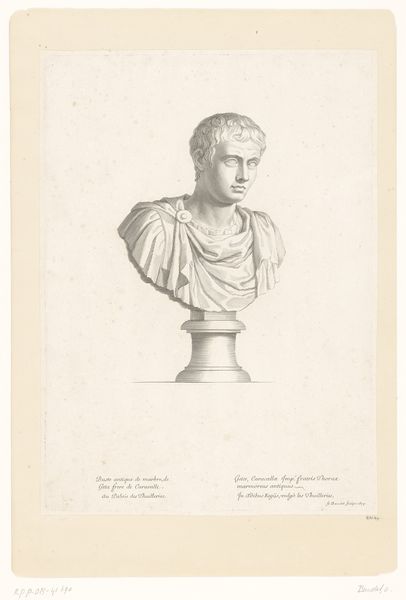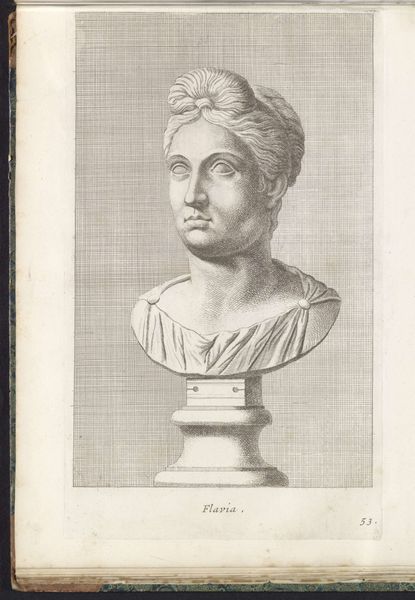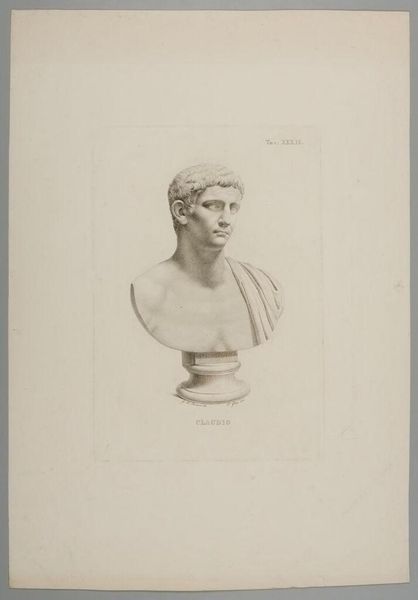
Dimensions: height 390 mm, width 281 mm
Copyright: Rijks Museum: Open Domain
Curator: Here we have an engraving dating back to 1679, created by Etienne Baudet, titled "Antique Bust of Julia Soaemias". The work offers a glimpse into the visual culture surrounding ancient Roman portraiture during the Neoclassical period. What are your first thoughts? Editor: There's a distinct austerity, almost a chilly elegance. It makes me think about the expectations placed on women in power and how they are often represented. The cold marble feel of the print adds to that sense of distance. Curator: Precisely. Neoclassical artists and engravers like Baudet often turned to Roman antiquity for models of virtue and authority. Notice the idealized features and serene expression, intended to project a sense of gravitas. The visual vocabulary suggests something stable and enduring. Editor: Enduring perhaps, but whose version of history are we seeing? Julia Soaemias was a controversial figure. She was the mother of Emperor Elagabalus and wielded significant power behind the scenes. Reducing her to this classical ideal feels like a way of sanitizing a more complex and potentially transgressive figure. Curator: That's a crucial point. By rendering her in this idealized, almost allegorical form, Baudet participates in a long tradition of selectively remembering the past. It downplays her actual political maneuvering and reduces her to a symbol, an ideal, instead. Editor: Exactly. This image, as beautiful and skillfully rendered as it is, contributes to a narrative that silences marginalized voices. Who was she truly, beyond the expectations of her gender and position? How much did power change or harm her, or how complicit was she within structures of power herself? The print keeps this intentionally silent by only providing the image, without any other information that humanizes her. Curator: I agree. And yet, we can appreciate how the print participates in shaping visual tropes we continue to inherit about leaders and female figures today. Consider the strategic use of light and shadow... they do lend a palpable aura of majesty to her presence. Editor: Right. And that calculated aura works to cement certain archetypes in the collective imagination. So, while appreciating the craftsmanship, it's also important to analyze how the artwork can reinforce systems of authority and cultural biases that serve certain narratives in history and contemporary discourse. Curator: It is indeed a powerful reminder that images are never neutral. Thanks for shedding light on the image’s wider sociopolitical contexts, allowing viewers to ponder just who is deemed "worthy" of preservation. Editor: A worthwhile exploration for our visitors, demonstrating the layered meanings behind what at first seems like a straightforward classical bust.
Comments
No comments
Be the first to comment and join the conversation on the ultimate creative platform.
